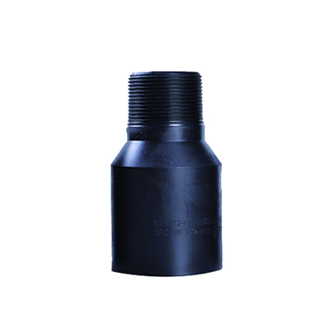- Afrikaans
- Albanian
- Amharic
- Arabic
- Armenian
- Azerbaijani
- Basque
- Belarusian
- Bengali
- Bosnian
- Bulgarian
- Catalan
- Cebuano
- Corsican
- Croatian
- Czech
- Danish
- Dutch
- English
- Esperanto
- Estonian
- Finnish
- French
- Frisian
- Galician
- Georgian
- German
- Greek
- Gujarati
- Haitian Creole
- hausa
- hawaiian
- Hebrew
- Hindi
- Miao
- Hungarian
- Icelandic
- igbo
- Indonesian
- irish
- Italian
- Japanese
- Javanese
- Kannada
- kazakh
- Khmer
- Rwandese
- Korean
- Kurdish
- Kyrgyz
- Lao
- Latin
- Latvian
- Lithuanian
- Luxembourgish
- Macedonian
- Malgashi
- Malay
- Malayalam
- Maltese
- Maori
- Marathi
- Mongolian
- Myanmar
- Nepali
- Norwegian
- Norwegian
- Occitan
- Pashto
- Persian
- Polish
- Portuguese
- Punjabi
- Romanian
- Russian
- Samoan
- Scottish Gaelic
- Serbian
- Sesotho
- Shona
- Sindhi
- Sinhala
- Slovak
- Slovenian
- Somali
- Spanish
- Sundanese
- Swahili
- Swedish
- Tagalog
- Tajik
- Tamil
- Tatar
- Telugu
- Thai
- Turkish
- Turkmen
- Ukrainian
- Urdu
- Uighur
- Uzbek
- Vietnamese
- Welsh
- Bantu
- Yiddish
- Yoruba
- Zulu
well tubing and casing
Well Tubing and Casing Essential Components in Oil and Gas Production
In the oil and gas industry, the integrity and functionality of well structures are paramount to achieving efficient and safe resource extraction. Two critical components that play a significant role in this process are well tubing and casing, each serving distinct yet complementary purposes.
Understanding Well Casing
Well casing refers to the series of pipe sections that are installed in the borehole after drilling. This structure is primarily employed to stabilize the walls of the well, preventing them from caving in, and to protect groundwater resources from contamination. Additionally, casing provides the necessary infrastructure for the production of oil and gas by facilitating access to underground reservoirs.
Casing is typically made of steel, although various grades are used depending on the specific requirements of the well environment, such as pressure and temperature. The installation of casing occurs in stages; after drilling to a certain depth, a casing string is positioned in the borehole and cemented in place. This cement not only secures the casing but also provides a barrier to isolate different pressure zones within the well.
Several types of well casing exist, including surface casing, intermediate casing, and production casing. Surface casing is the first layer and is installed to protect freshwater sources; it usually extends from the surface to a certain depth, providing a barrier against pressure influx from surrounding formations. Intermediate casing follows, allowing for adjustments as drilling progresses. Finally, production casing is the innermost layer that facilitates the flow of oil or gas from the reservoir to the surface.
The Role of Well Tubing
well tubing and casing

While casing provides structural support, well tubing serves as the conduit through which oil and gas are transported from the well to the surface processing facilities. Tubing is inserted into the production casing and is generally smaller in diameter, allowing for easier handling and installation. Like casing, tubing is also primarily made of steel and is designed to endure considerable pressure and temperature conditions characteristic of underground reservoirs.
The installation of tubing occurs after the cementing of the production casing. Once the well is completed, production tubing is run down to the reservoir, and it is where the actual extraction of hydrocarbons takes place. Tubing can be removed and replaced without the need to go back through the entire casing, which simplifies maintenance and allows for efficient operations during the life of the well.
Key Considerations in Well Tubing and Casing
Both well tubing and casing must be selected based on several critical factors, including the well's depth, the geological characteristics of the formation, and the intended production methods. Engineers must also consider variations in pressure and temperature throughout the production process to ensure that the materials chosen can withstand these conditions.
Corrosion is another significant concern, as the harsh environments of oil and gas wells can lead to deterioration over time. As a result, protective coatings, corrosion-resistant alloys, and cathodic protection systems are often incorporated into both tubing and casing designs to enhance their longevity.
Conclusion
In summary, well tubing and casing are fundamental components in the landscape of oil and gas extraction. Their proper installation and maintenance are vital to the overall efficiency, safety, and environmental protection of drilling operations. A thorough understanding of these components not only aids in the design and execution of well projects but also contributes to the sustainable management of natural resources, ensuring that the benefits of oil and gas extraction can be realized for generations to come. As demands on the industry continue to evolve, advancements in materials and technology will only enhance the effectiveness of well tubing and casing, further solidifying their importance in the oil and gas sector.
-
Well Casing Extension Couplings – Applications and InstallationNewsJun.06,2025
-
Types of Crossover Subs in Drilling & CompletionNewsJun.06,2025
-
Key Features of High-Quality Tubing Pup JointsNewsJun.06,2025
-
Installation and Maintenance Tips for Steel Couplings for PipeNewsJun.06,2025
-
How to Select the Right Pup Joint for Oil & Gas OperationsNewsJun.06,2025
-
Applications of Stainless Steel Pipe CouplingsNewsJun.06,2025







